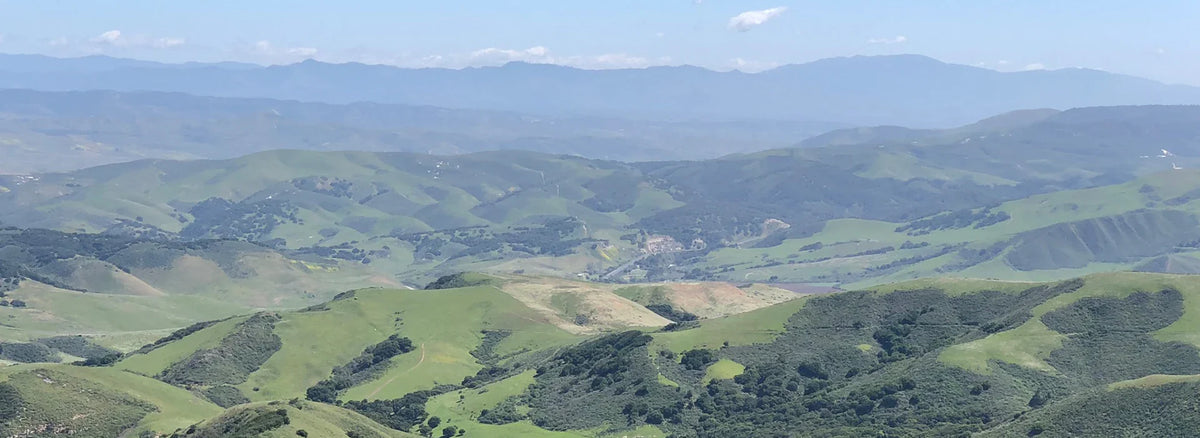
Regenerative Agriculture 101
The future of organic farming lies in regenerative agriculture. Working in harmony with nature, regenerative agriculture encourages the living things of the earth to thrive in their native habitats. This system of principles and practices respects the soil and waterways we all depend upon, inviting nature to take root and return to its healthiest, most vibrant state.
What is regenerative agriculture?
As we learn more about these innovative methods, we’re filled with the same excitement that drove Christine Nielson to create Coyuchi nearly three decades ago. Building on the pesticide and fertilizer-free methods that make organic farming so vital to the health of the planet, regenerative agriculture encourages the land to thrive in its most natural form, relying on ecological processes and cycles instead of human input.
Gone are the tidy lines and human-imposed order of conventional farms. Regenerative agriculture lets the land recover: native wildlife returns, creeks begin to flow again, and crops thrive as though freed from captivity. It’s about nurturing the waterways, soil, and biodiversity that all agriculture depends upon. In the words of conservationist Jake Fiennes: “Nature is random, but it is wonderfully organized.”

The many benefits of regenerative agriculture include:
- Carbon sequestration
- Increased crop yields
- Resilience to climate instability
- Fire and flood resiliencyIncreased biodiversity + biological activity
- Natural pest suppression
- Healthier soil
- Improved watersheds
- Reduced erosion
- Better health and vitality for farming communities
What do you mean by biodiversity?
Biodiversity describes the variety of living things in any given ecosystem. Regenerative agriculture stimulates biodiversity in the soil — including roots, mycorrhizal fungi, bacteria, worms and insects — and above it, encouraging plants, wildlife (like beneficial species of birds and pollinating insects), and all living things to thrive in harmony with nature.

As our colleagues at Dr. Bronner’s put it: “Soil is not merely dirt — an inert medium — but a dynamic living membrane.” Fertile, carbon-rich soil not only fights global warming by pulling carbon out of the atmosphere, it also:
- Retains more water
- Helps plants naturally ward off pests and disease
- Increases the nutrient density of food
- Builds up fire and flood resilience
Regenerative agriculture works to mimic nature, returning the land to its untouched state by moving away from the fossil-fueled practices of modern industrial agriculture. This encourages species to return to their native habitats and re-balance the delicate ecosystems of the planet.
How does it work?
Regenerative agriculture practices are unique to each ecosystem, but our friends at White Buffalo Land Trust have taught us a few of the traditional methods that help their Southern California farm thrive:
- Cover cropping works to reduce soil erosion and runoff by growing plants that are beneficial to primary crops either concurrently or during periods of rest. Cropping like this encourages biodiversity and nurtures the health of the soil without the use of harmful pesticides or fertilizers.
- Perennial focus builds soil over time, drawing carbon from the atmosphere. Once established, perennial crops continue to bear fruit for years or even decades.
- Hedgerows surround farm fields with rows of vegetation (like trees, shrubs, and perennial grasses) to control weeds, protect air and water quality, control soil erosion, promote biodiversity, and encourage beneficial insect activity (like bees) to improve pollination and control pests.
- Limited disturbance reduces activities like tilling and added traffic, leaving nature to complete its many courses.
- Animal integration is an important function, allowing holistic grazing of livestock in a way that complements the ecosystem.


Why do we need regenerative agriculture?
Industrial agricultural practices have been poisoning our soil, air, and waterways with toxic chemicals, GMOs, petroleum-based fertilizers, and pesticides for decades. Up to 25% of annual emissions contributing to climate change can be traced back to these practices, with soil loss occurring 10 times faster than it can be replenished. If these methods are allowed to continue, our supply of topsoil is predicted to run out in just 60 years. This is the topsoil required to grow 95% of our food.
Fortunately, it’s not too late to undo the damage. Research from the Rodale Institute estimates that a global switch to regenerative organic agriculture has the potential to sequester more than 100% of the current CO2 emissions. It’s amazing how forgiving Mother Earth can be.
Getting Involved
We at Coyuchi see regenerative agriculture as the next step for organic farming. Our existing partnership with Fibershed has supported closed-loop carbon farming practices at the local ranches who produce our Climate Beneficial Wool. This practice of carbon sequestration promotes soil health and animal welfare, and finds a kindred spirit in the mission that drives our colleagues at the White Buffalo Land Trust.
We choose to endorse regenerative organic agriculture because it is the key to healthier farming (food, fiber, and fuel), carbon sequestration, and increased biodiversity, while strengthening communities and improving the livelihoods of farmers and ranchers all over the world. Food and fiber are united in the need for healthier farming practices, and our support of regenerative agriculture is a step forward for both the fibers we handle at Coyuchi, and the food we consume every day.
It’s not too late to reverse the harmful effects of climate change, but it is imperative that we take action now. Our support of White Buffalo Land Trust and the Jalama Canyon Ranch is an unprecedented opportunity to make a positive impact on the planet, and lead the charge for safer, cleaner practices in food production today, and the fiber trade in the future.